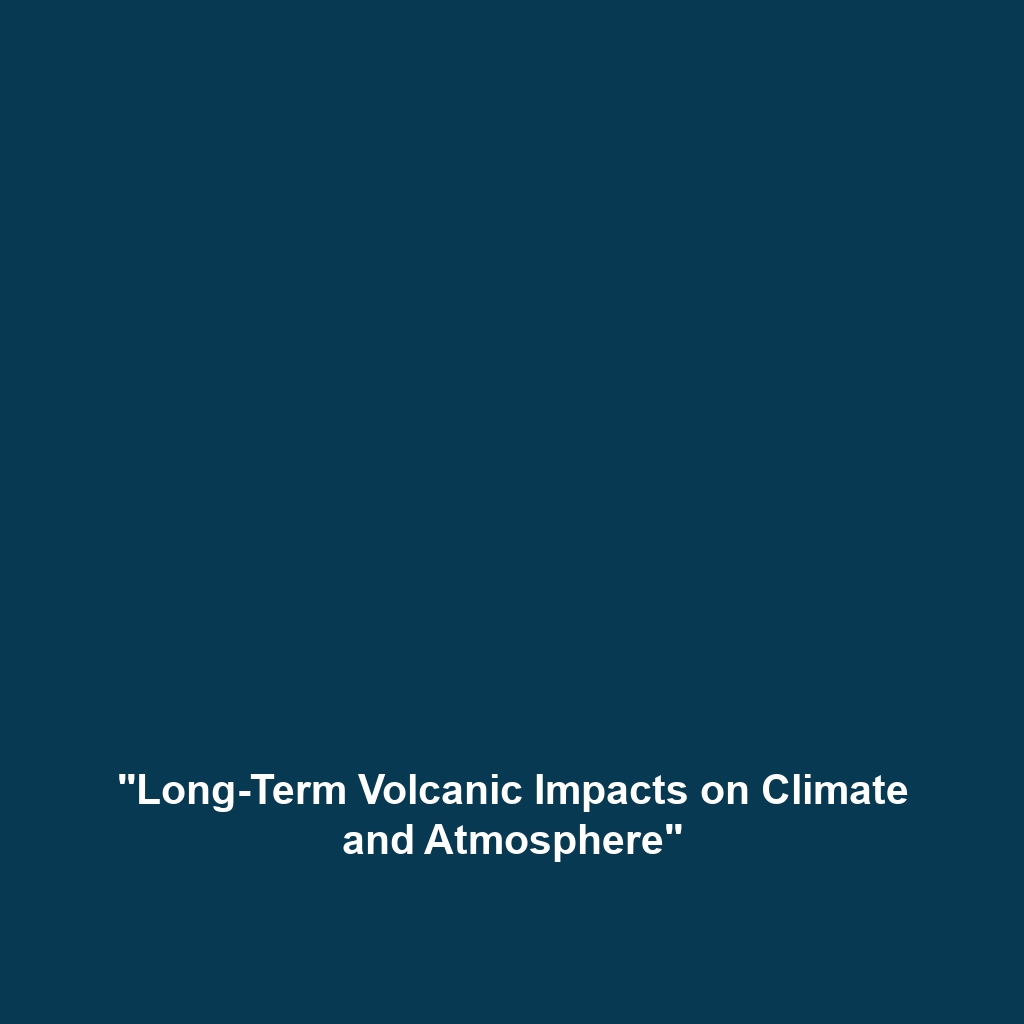Long-term Volcanic Effects on Climate and Atmospheric Composition
Introduction
Long-term volcanic activity plays a significant role in shaping climate and atmospheric composition, making it a pivotal subject within Climate History. Understanding how volcanic eruptions impact the Earth’s climate can illuminate the broader narrative of environmental changes over geological time scales. These eruptions release immense volumes of gases and ash that can alter atmospheric conditions and climate trends. This exploration delves into the intricate connections between volcanic phenomena and historical climate patterns, underscoring their importance in our quest to comprehend Earth’s climatic legacy.
Key Concepts
Volcanic Emissions and Climate Effects
The primary concepts surrounding long-term volcanic effects on climate include:
- Greenhouse Gas Emissions: Volcanic eruptions emit gases such as carbon dioxide (CO2) and sulfur dioxide (SO2), influencing the greenhouse effect and global warming.
- Aerosols and Temperature Change: Ash and sulfur aerosols can lead to short-term cooling by reflecting sunlight, which significantly impacts climate patterns.
- Geological Records: Geological studies provide insights into past volcanic activities and their climatic consequences, contributing to our understanding of Climate History.
Applications and Real-World Uses
The implications of long-term volcanic effects on climate are profound, with several applications including:
- Climate Modeling: Understanding volcanic impacts aids in improving climate models that predict future climate scenarios.
- Agricultural Planning: Knowledge of volcanic activity can inform agricultural strategies, particularly in regions prone to climatic shifts due to eruptions.
- Disaster Preparedness: Monitoring volcanic activity supports early warning systems for populations at risk of eruptions and the subsequent climatic changes.
This highlights how long-term volcanic effects on climate and atmospheric composition are used in Climate History to develop effective strategies for adaptation and mitigation.
Current Challenges
Despite advancements, several challenges persist in studying long-term volcanic effects, including:
- Data Limitations: Historical records of volcanic eruptions and their climatic impacts are often incomplete or biased.
- Modeling Complexities: Simulating the multifaceted interactions between volcanic emissions and climate remains a challenge for researchers.
- Public Perception: Misunderstandings regarding the scale and impact of volcanic eruptions on climate can hinder effective policy-making.
Future Research and Innovations
Future research is poised to explore innovative methodologies such as:
- Advanced Climate Models: Integration of machine learning to enhance predictive models for volcanic impacts on climate.
- Satellite Monitoring: Utilizing next-gen satellite technology to observe volcanic eruptions and their atmospheric effects in real-time.
- Geochemical Studies: Continued research into the geochemical signatures left by past eruptions to better understand their long-term impacts.
Conclusion
In summary, the long-term effects of volcanic activity on climate and atmospheric composition are critical in understanding the broader field of Climate History. These phenomena have far-reaching impacts on both natural and human systems, emphasizing the need for continued research and monitoring. As we advance our understanding of these complex interactions, it is essential to incorporate this knowledge into climate resilience strategies. For further exploration, consider reading about climate modeling and historical volcanic eruptions to deepen your understanding of this intricate topic.


